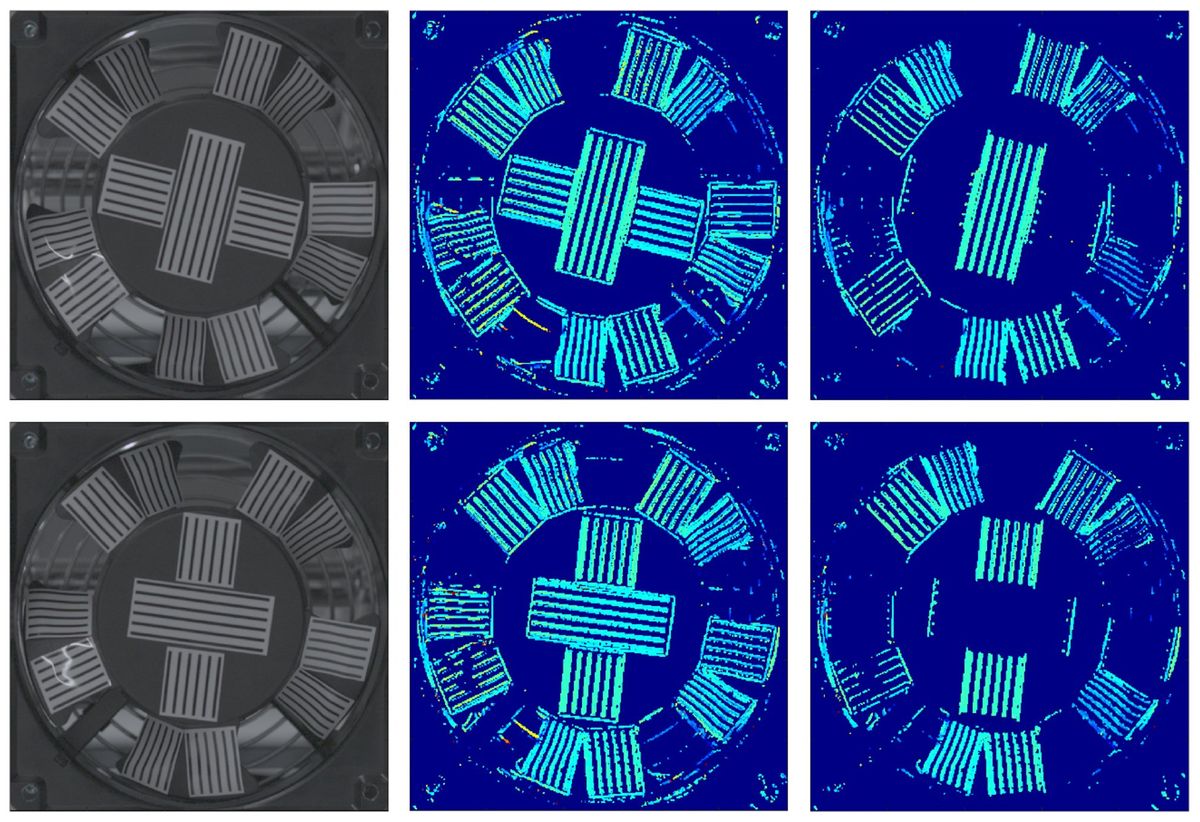In 2013, Canon introduced its first dual-pixel autofocus, a technology that allows almost every pixel in a photo sensor to help focus the image it takes. Now Canon researchers say they’ve developed a new improvement on their previous improvement to autofocus tech. And this new approach finds its focus faster, better, and in lower light—without requiring new components and technologies to be invented first. It simply involves one small twist.
“There has been a strong demand for autofocus which can be applied to both vertical and horizontal directions. To address this issue, we introduce two types of pixels.”
—Daiki Shirahige, Canon
Pixel-development engineer Daiki Shirahige and colleagues from Canon’s Device Technology Development Headquarters in Kawasaki, Japan, reported their findings at last month’s IEEE International Electron Devices Meeting in San Francisco. Shirahige said they have developed a new image sensor whose photodiodes are perpendicular to each other. This “cross dual-pixel twisted-photodiode,” they note, performs better than autofocus sensors in the marketplace today.
The original method of creating dual-pixel autofocus sensors involved placing two photodiodes under a shared lens, which allowed the sensor to detect when incoming light on both diodes was in phase, and therefore, in focus. Before that, camera makers relied on a few sample pixels to adjust the camera lens based on the contrast in the image, a slower method.
Those focusing pixels could not record image data, so there was always a trade-off between autofocusing ability and image quality. Instead, the dual-pixel autofocus approach made it possible for almost every pixel in the sensor to contribute to focusing the lens ahead of shooting, and to then contribute information to the final photo. The advantages included speed, better focus in low-light situations, and better focus across a greater fraction of the image.
Today, many of the flagship mobile-phone cameras make use of some version of the above technology. Meanwhile, the market for these sensors is projected to double from 2022 to 2030, the consultancy Reports Insights predicted in 2023. Hardware makers have even developed quadruple-pixel structures—building on Canon’s original 2013 innovation—for use in larger sensors.
However, these multipixel photodiodes have a disadvantage: the arrangement of photodiodes favors light on one axis at the cost of the other. Cameras could focus on horizontal patterns, or vertical ones, but not both with the same precision. Some chipmakers have built slanted photodiodes to better capture both vertical and horizontal light—and place photodiodes next to each other at 90 degrees. Yet these approaches have disadvantages: they can take longer to read out and require additional processing.
Canon’s new structure, which they call a twisted-photodiode image sensor, stacks two identical photodiodes, one oriented to capture horizontal patterns and the other rotated ninety degrees to capture vertical patterns. Because the horizontally and vertically oriented photodiodes are the same type of components, the data each generates requires no more extra processing time or power than that of any other diode in the system. So the overall autofocus speed is higher. The orthogonal-diode arrangement, by virtue of is comparable simplicity, also achieves faster readouts than more complex quadruple or other elaborate photodiode structures.
Canon’s team reported that their system is also much faster at capturing the electrons transferred from the photodiodes, capturing as many as 121,000 electrons with the same lag as previous photodiodes, which is more than double the capacity of comparable earlier systems.
“There has been a strong demand for autofocus which can be applied to both vertical and horizontal directions,” Shirahige says. “To address this issue, we introduce two types of pixels, one suited for detecting these horizontal patterns.”
Fabricating the sensors should be possible with processes already widely used in the imaging industry, he adds. Canon, however, would not provide an estimate of when the technology might appear in commercial systems.
This article appears in the March 2024 print issue as “Focusing Faster With Perpendicular Photodiodes.”
Lucas Laursen is the technology policy editor at IEEE Spectrum. He covers how emerging technologies are changing the balance of power between companies, governments, and individuals. The rest of the time, he worries about his own balance on a bicycle, skis or the side of a mountain.



